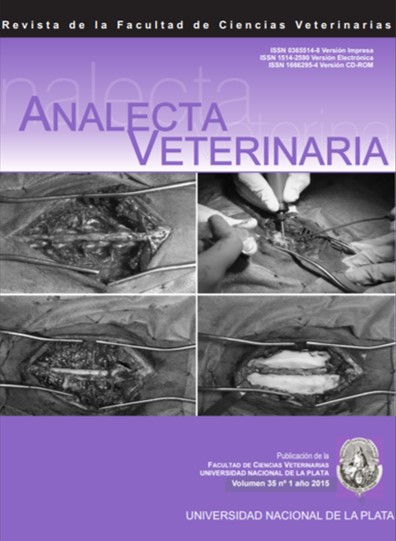Factores de virulencia de cepas de <i>Enterococcus</i> aisladas de aves silvestres y de corral en la Patagonia
DOI:
https://doi.org/10.24215/15142590ep.%206-12Keywords:
aves silvestresAbstract
In this study, the frequency and distribution of vancomycin resistance and virulence factors in Enterococcus strains isolated from faecal samples of wild birds and poultry were analysed. A total of 128 enterococci isolates were recovered using selective culture media from 250 faecal samples. Within the strains that displayed at least one of the studied virulence factors, Enterococcus faecalis was the most prevalent detected species (30 isolates), followed by E. faecium (23 isolates), E. durans/hirae (3 isolates) and E. avium (1 isolate). Screening of virulence factors resulted in 16 β-hemolytic strains, while 47 strains exhibited gelatinase activity. Vancomycin resistance was detected in 17 strains using standard method for clinical samples. However, the presence of vanA, vanB and vanC genes could not be confirmed by PCR techniques. The data shown suggest that wild birds and poultry have the potential to disseminate in the environment Enterococcus strains that harbour virulent traits, which in turn might be transferred either to other animals or to humans.
Downloads
Metrics
Published
How to Cite
Issue
Section
License
Authors retain the copyright and assign to the journal the right of the first publication, with the with the terms of the Creative Commons attribution license. This type of license allows other people to download the work and share it, as long as credit is granted for the authorship, but does not allow them to be changed in any way or used them commercially.

Analecta Veterinaria by School of Veterinary Sciences, National University of La Plata is distributed under a Creative Commons Attribution-NonCommercial-NoDeriv 4.0 International License.

























